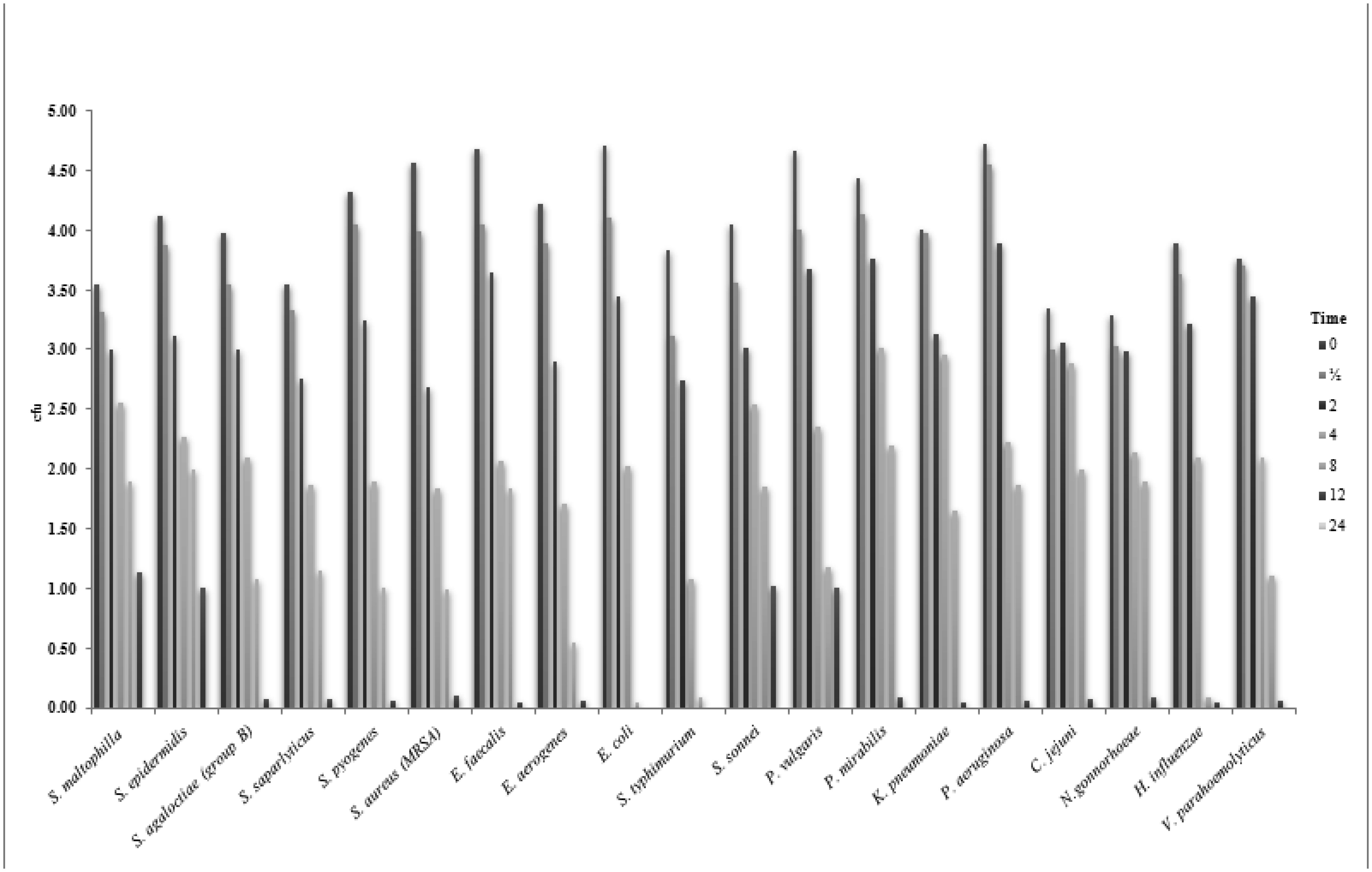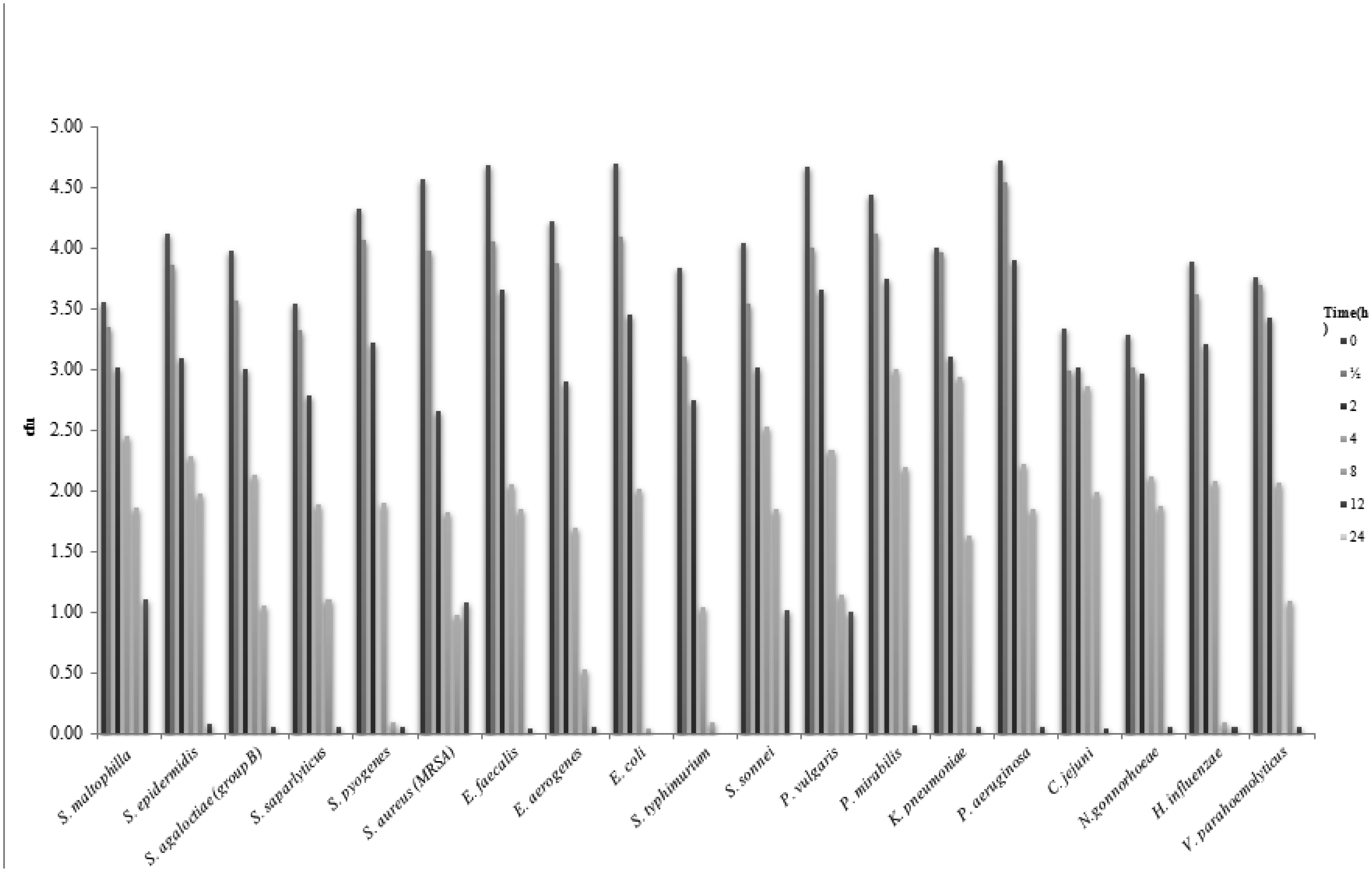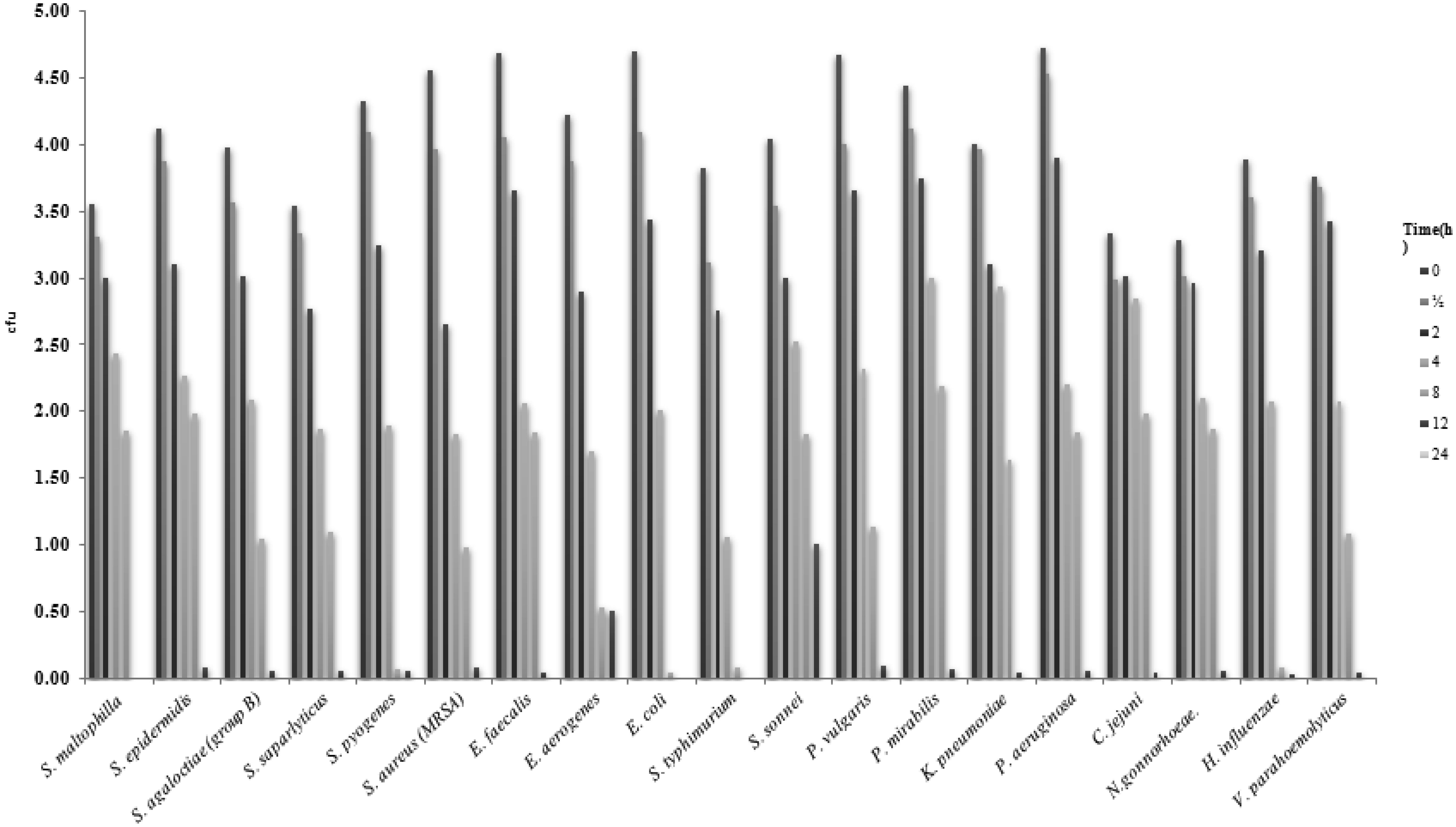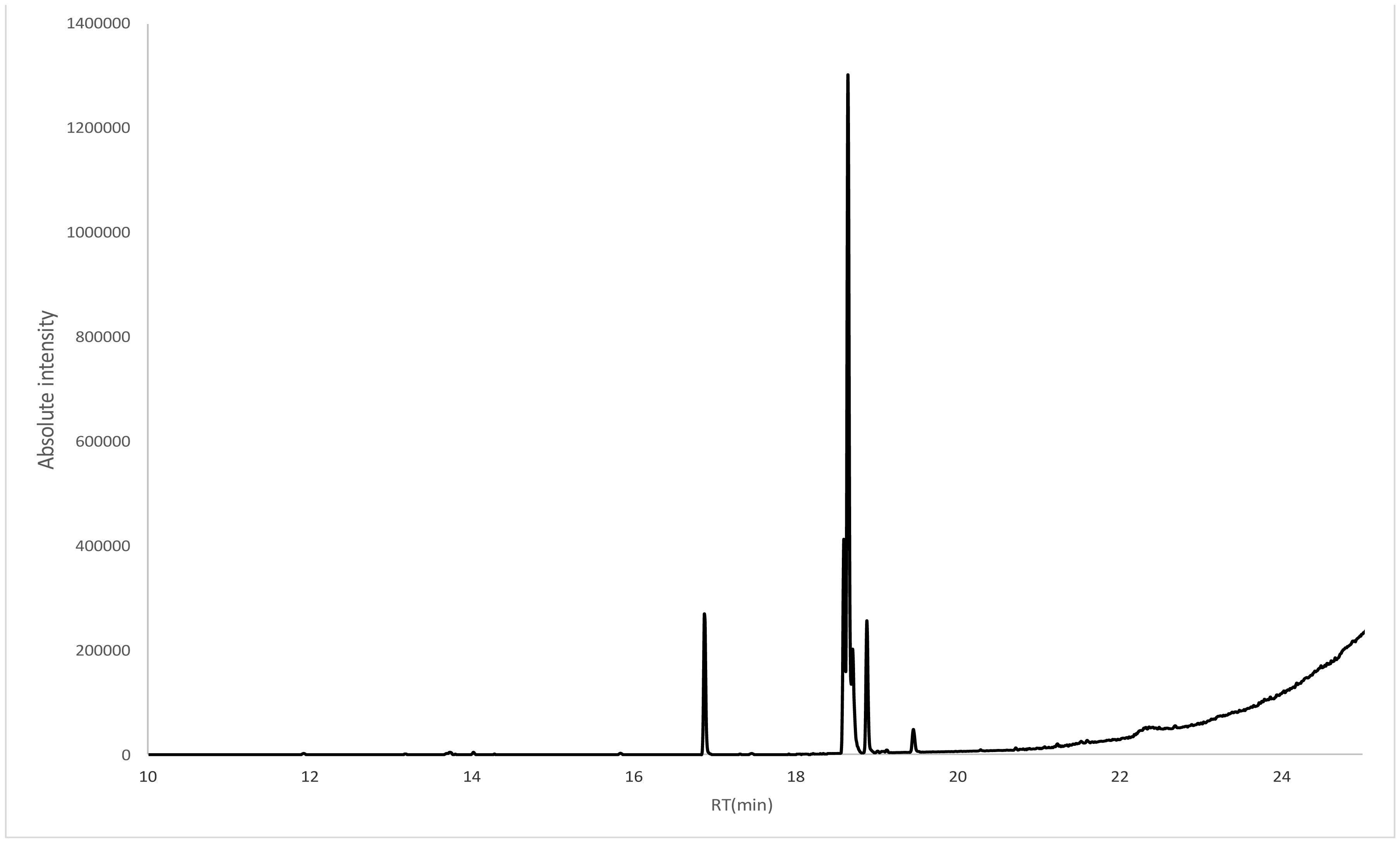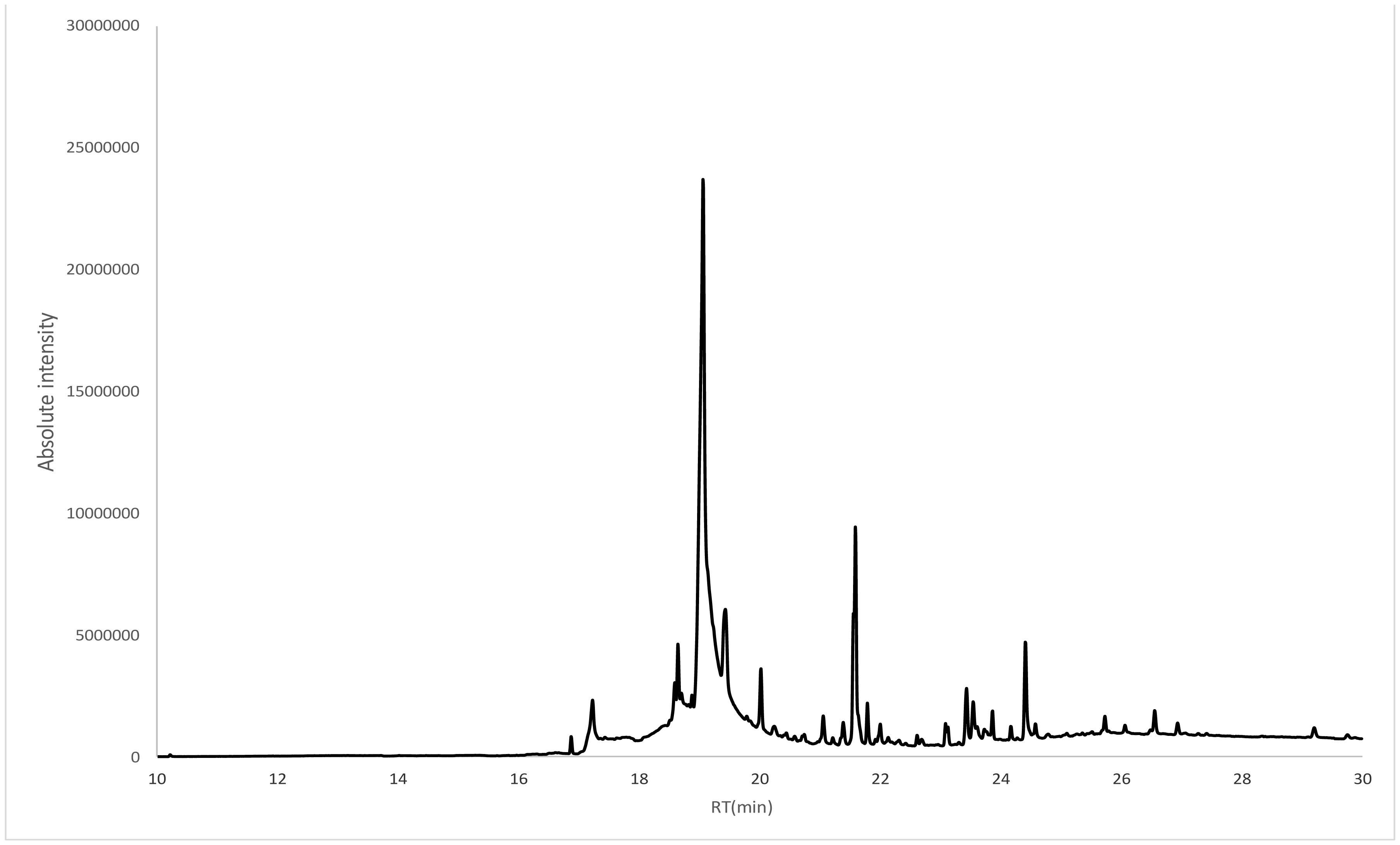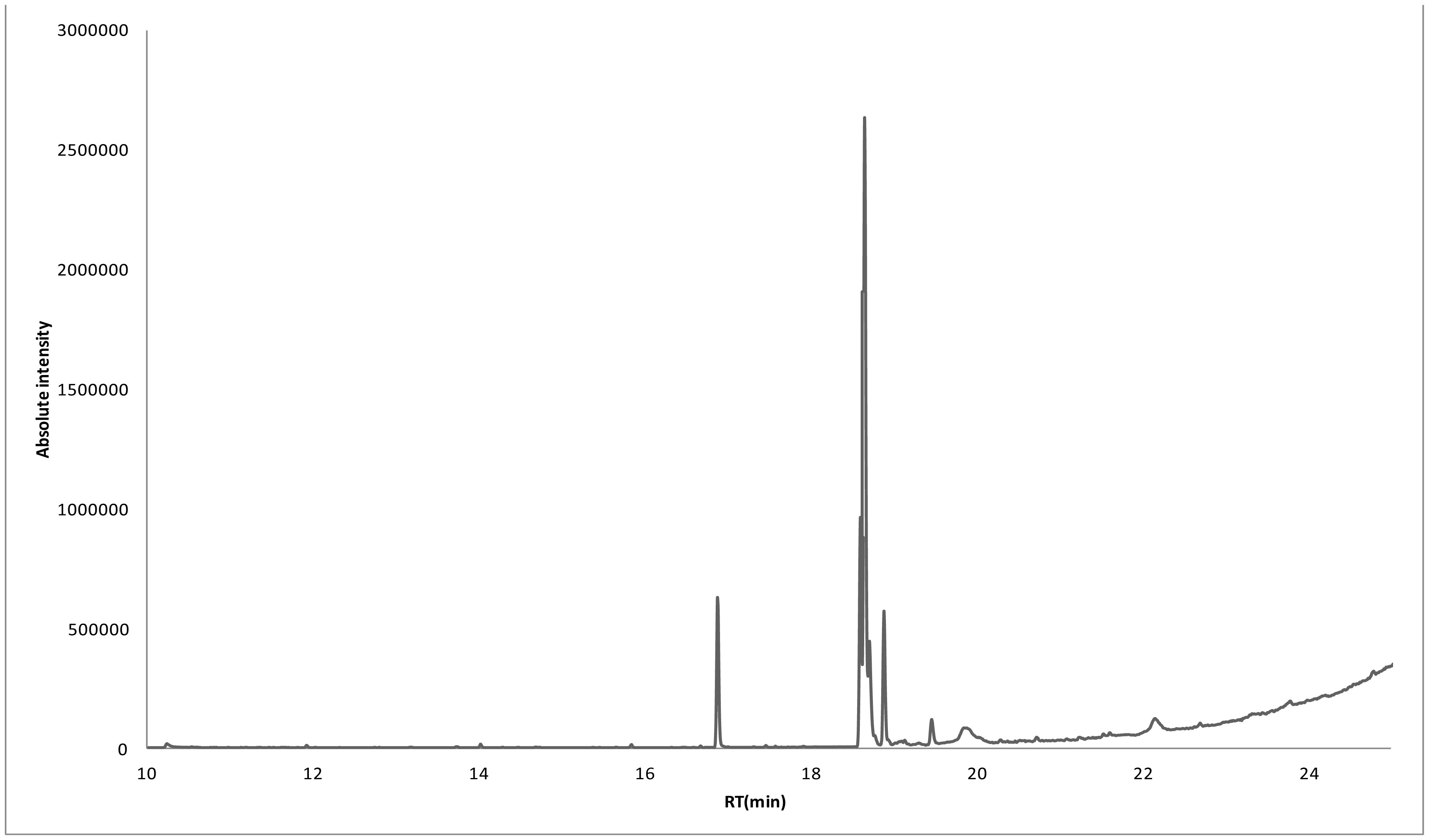1.
Introduction
The random use of antibiotics has led to the development of new bacterial strains with the ability to resist antibiotic treatment, resulting in the loss of efficacy of many antibiotics currently on the market. Antibiotic-resistant bacteria (ARB) and antibiotic resistance genes (ARGs) have become widespread in wastewater and irrigation water and therefore, they can be transferred to crops and vegetables, and subsequently, to humans. Alternatively, ARB and ARGs may be transferred to animals and then to humans. Several studies have found that ARB and ARGs are propagated by agricultural irrigation and the treatment of wastewater [1]–[5]. Hocquet et al. [6] presented data on antibiotic-resistant strains of Escherichia coli and Pseudomonas aeruginosa, which have extended-spectrum β-lactamases as their ARGs, and they concluded that antibacterial resistance is an ‘environmental pollutant’. A study of antibiotic resistance bacteria in China found that ARGs are highly prevalent and diverse in soils, plant effluent, sewage treatment, surface water, and animal waste, due to the use of antibiotics [7]. As a result of these changes in bacterial responses to antibiotics, the investigation of new sources of antibiotics, including medicinal plants, is required. Thus, many studies have investigated the antimicrobial properties of active compounds from medicinal plants, sea animals, and some microorganisms. Antimicrobial studies of medicinal plants have shown that these plants exhibit bioactivity against microorganisms and can be effective at treating diseases, such as intestinal disorders, diarrhea, colitis, and digestive problems, including flatulence, stomach ache, and indigestion [8]. In a study on the potential antimicrobial activity of green tea polyphenols and Triphala against Enterococcus faecalis, significant antibacterial activity was demonstrated, and these medicinal plants could be used to improve irrigation treatment of the root canal [9].
In a study of the effects of alcoholic, etheric, and aqueous extracts of Magnolia grandiflora L., Melissa officinalis L., Thymus vulgaris L., and Rhus corriaria L. against Streptococcus mutans L. and S. sanguis L., antibacterial activities of the ethanol extract of M. officinalis were observed against both bacterial strains [10].
Alcohol extracts of Achillea crithmifolia, A. grandifolia, Angelica pancicii, A. sylvestris, Artemisia absinthium, Laserpitium latifolium, Tanacetum parthenium, Cynodon dactylon, Curculigo orchioides, Cinnamomum camphora, Curcuma longa, Maesa lanceolata, Calpurnia aurea, Elaeodendron croceum, Hypericum roeperianum, Abelmoschus esculentus, Brassica oleracea, Rosa brunonii, Sueda fruticosa, Calligonum polygonoides, Peganum harmala (L.), Cucumus sativus, Helianthu annus, Melia azedarach L., Acacia arabica, and Tamarix aphylla L. show antimicrobial activity against Acinetobacter sp., Klebsiella sp., Proteus mirabilis, P. aeruginosa, E. coli, Staphylococcus aureus, Streptococcus pyogenes, S. pneumoniae, E. faecalis, Salmonella typhi, S. typhimurium, Bacillus cereus and B. subtilis, with active compounds including flavonoids and polyphenols [11]–[14]. Herbal medicines are used by 80% of the world's population. The most popular herbal medicines are Thymus vulgaris, guava, Glycyrrhiza glabra, Capsicum annum, Aloe vera, papaya, turmeric, Ocimum gratissimum, and Zingiber officinale [15]–[17]. The flora of the Arabian Peninsula consists of only a few different plant species. These plants have adapted to the harsh environment and in such an environment, plants are characterized by unique bioactive compounds that classify them as medicinal plants. These plants have been used for thousands of years in traditional medicines for the treatment of diarrhea; intestinal disorders; colitis; digestive problems, including flatulence, indigestion, and stomachache; and bronchitis [14],[15],[18]–[20]. Further, medicinal plants can be used for protection against pathogenic dental biofilms of cavity-causing bacteria, including actinomycetes, Actinobacillus, E. faecalis, Fusobacterium, Lactobacillus, Streptococcus mutans, Streptococcus sanguis, Prevotella, and Prophyromonas gingivalis [21].
Medicinal plants from the Arabian Peninsula include Rhazya stricta, Citrullus colocynthis, mountain germander, Pulicaria undulate, Artemisia herba-alba, Acacia arabica, desert thorn, and Ziziphus spina-christi. These plants have shown high levels of antimicrobial activity against S. aureus, E. coli, P. aeruginosa, Proteus vulgaris, and Klebsiella pneumoniae [22]–[24]. Tamarix arabica and Salvadora persica have been studied as medicinal plants and they have been found to contain the following bioactive compounds: phosphorus, calcium, minerals, fluoride, polyphenolics, flavonoids, phenolic compounds, glycosides, terpenes, sterols, and alkaloids [25],[26].
This study was designed to investigate the antibacterial activity of alcohol extracts of T. arabica and S. persica individually and in combination as a 1:1 volume ratio. The minimum inhibitory concentration (MIC) and the minimum bactericidal concentration (MBC) were determined and the effect of the plant extracts on phosphorus and potassium leakage was assessed as an indicator of cytoplasmic membrane permeability. Furthermore, gas chromatography (GC)-mass spectrometry (MS) was performed to identify the bioactive compounds.
2.
Materials and methods
2.1. Test organisms
Fast-growing, antibiotic-resistant strains of bacteria were obtained from the American Type Culture Collection (ATCC; Manassas, VA, USA). The Gram-positive bacteria included in the study were Staphylococcus epidermidis ATCC 12228, S. aureus (MRSA) ATCC 33591, S. saparlyticus ATCC 15305, Streptococcus pyogenes ATCC 19615, S. agaloctiae (group B) ATCC 12386, and Enterococcus faecalis ATCC 29212. The Gram-negative bacteria included in the study were Senoterophomonas maltophilla ATCC 51331, Shigella sonnei ATCC 9290, Salmonella typhimurium ATCC 14028, Proteus vulgaris ATCC 33420, P. mirabilis ATCC 35659, Klebsilia pneumoniae ATCC 13883, Campylobacter jejuni ATCC 33291, Nisseria gonorrhoeae ATCC 31426, P. aeruginosa ATCC 27853, Enterobacter aerogenes ATCC 29751, Escherichia coli ATCC 8239, Hoemophilus influenza ATCC 49247, Vibrio parahoemolyticus ATCC 17802, Enterobacter aerogenes ATCC 13048. Under aerobic/anaerobic conditions, bacterial strains were grown in the selected media at 37 ± 2 °C for 24 h.
2.2. Study plants
Two folk medicinal plants from the Arabian Peninsula, Tamarix arabica and Salvadora persica, were used in this study. Both plants where collected from Al Makhwah, Saudi Arabia during fall/winter, 2014. Plants were identified at the Botany Section of the Department of Biology at King Abdulaziz University.
2.3. Alcohol extraction
Leaves of T. arabica and S. persica were collected, washed with distilled water, and spread in a shaded place until dry. The dried leaves were then ground into a powder. Powdered plant extracts were prepared in 100% ethanol (1:1 w/v) in a conical flask, which was shaken at 120 rpm at 30 °C for 3 d until dried. Extracts were weighed and yield was calculated relative to the weight of the initial crude extract. The extracts were then dissolved in a 1:1 volume of dimethylsulfoxide (DMSO) and stored in a closed bottle at 4 °C.
2.4. Antibacterial assays
The antibacterial activity of the plant extracts was determined in vitro against Gram-positive and Gram-negative strains. Bioactivity was measured by disc diffusion and broth dilution methods, as described by the Clinical and Laboratory Standards Institute [27],[28]. Each extract was dissolved in DMSO to a concentration of 3 µg/mL and filtered through a 0.22 µm pore filter (Millipore, Billerica, MA, USA). The antibacterial activities of each extract were investigated by disc diffusion, using filter paper discs (1 mm diameter impregnated with 100 µL of extract) that were placed on a pre-inoculated agar surface. Negative controls were prepared using the solvent only. Plates were incubated at 37 °C for 24 h and the inhibition zones around each disc were measured. All tests were performed in triplicate.
2.5. Determination of MICs
MIC is defined as the lowest concentration of an antimicrobial that prevents the growth of a microorganism following a specific incubation period. MICs were determined using a broth microdilution method by 96 wells plates, as described by [29],[30]. Bacterial strains were cultured at 27 °C on Mueller Hinton Agar (MHA) and then resuspended in 1 mL of Mueller Hinton Broth (MHB; CM0405; Oxoid, Cambridge, UK) to obtain a final concentration of 1 × 105 colony-forming units (CFU)/mL. Each extract was serially diluted with MHB. Following incubation, the MIC was determined as the lowest concentration of each extract for which there was no visible growth compared with the control [31]. MIC values were recorded as mg/L [29], and each treatment was performed in triplicate.
2.6. Determination of MBCs
MBC is defined as the lowest concentration of an antibacterial agent needed to kill 99.9% of the initial inoculum. MBCs were determined by inoculating 0.1 mL from wells showing no growth in the MIC assay, onto sterile MHA [32], in an Economic (EC) plate (patent no. 4569; King Abdulaziz City for Science and Technology, Riyadh, Saudi Arabia). Each serial concentration of the extract showing no growth in the MIC assay was cultured in one EC plate and the plates were incubated at 27 °C for 24 h. The lowest concentration showing no growth of the tested bacteria was considered as the MBC. A negative control plate was included containing only medium. MBC values were recorded as mg/L [33], and each treatment was performed in triplicate.
2.7.
Kill-time determination
Liquid cultures (1 mL) were diluted to an initial bacterial inoculum of 2–5 × 105 CFU/mL in MHB containing the MIC concentrations of T. arabica and S. persica extracts. The cultures were then incubated for 0, 2, 4, 8, 12, and 24 h at 37 °C. At each time point, 50 µL aliquots of each bacterial strain were plated on one EC plate containing MHA and were incubated at 37 °C for 24 h. Visible colonies were identified using a Scan 500 colony counter (Interscience, Woburn, MA, USA). Colonies were counted as CFU/mL [34],[35], and each treatment was performed in triplicate.
2.8.
Determination of potassium and phosphorus leakage
This experiment was performed to estimate the secondary metabolism of the tested bacterial strains by computing the proportion of potassium, and phosphorus secreted into the medium. Potassium and phosphorus ion efflux was determined according to a previously described method [36],[37]. The concentration of free potassium, and phosphorus ions in the bacterial suspension of each bacterial strain was measured after the exposure of bacterial cells to nutrient broth for 20, 60, and 100 min. The mixture was incubated at 37 °C. Three replicates of each tube were conducted. At each pre-established interval, extracellular potassium (EasyRA Medica, Bedford, USA) and phosphorus (COBAS® INTEGRA 400 Plus Analyzer, Roche, Basel, Switzerland) concentrations were measured using photometric procedures. 300 µM of Cetyl Trimethyl Ammonium Bromide (CTAB) was used as positive control for giving 100% permeabilization (Sigma-Aldrich, Merck, Darmstadt, Germany). Results were expressed as the amount of extracellular free K+ and PO3− in the growth medium (µmol/mL). Each treatment was performed in triplicate.
2.9.
GC-MS analysis
The individual ethanol extracts of T. arabica and S. persica or a combination of both (1 g) were dissolved in methanol for 48 h. This procedure was repeated twice. The extracts were filtered through a 45 µm filter and the resulting solvent was concentrated under vacuum by nitrogen purging. Concentrated samples were resuspended in 1 mL of isooctane, filtered through a 0.2 µm filter, and stored at 4 °C until GC-MS analysis.
The samples were analyzed on a GC-MS QP2010 Plus instrument (Shimadzu, Kyoto, Japan) with a standard Rtx 5-MS capillary non-polar column (Restek Corporation, Bellefonte, PA) (dimension: 30 Mts, ID: 0.25 mm, film thickness: 0.25 µm). The flow rate of the mobile phase (carrier gas: He) was set at 1.0 mL/min. For the GC component, the oven temperature increased from 60 °C to 300 °C at 10 °C/min and the injection volume was 1 µL. Samples were dissolved in isooctane and run to completion at a range of 50–650 m/z and the results were compared with data from the National institute of standards and technology (NIST) database [38]–[41]. Samples were analyzed at the Center of Excellence in Environmental Studies, King Abdul-Aziz University.
2.10.
Statistical analysis
The microbial zone of inhibition and cell count (CFU/mL) data were collected, summarized, and tabulated. Statistical analyses were performed using the Statistical Package for the Social Sciences, version 20 (IBM, Armonk, NY, USA). The results are expressed as mean ± standard deviation (SD). Differences between samples and the homogeneity between groups were determined using an ANOVA. Results were considered significant at P ≤ 0.05 and highly significant at P ≤ 0.01.
2.11.
References
The references in this paper were organized using EndNote version X7 (Thomson Reuters, Toronto, Canada). References are in the APA format.
3.
Results
The development of new antibiotics is needed to control multidrug-resistant bacteria. The effects of T. arabica, S. persica, and T. arabica:S. persica extracts on bacterial growth inhibition are shown in Table 1. High antibacterial activity of the plant extracts was seen against E. coli, S. typhimurium, and C. jejuni. Further, the Gram-negative bacteria were more sensitive than the Gram-positive bacteria and T. arabica had greater antibacterial activity than T. arabica:S. persica and S. persica.
3.1. Determination of MICs
Table 2 shows the MIC values of serial dilutions of T. arabica, S. persica, and T. arabica:S. persica on microbial growth. The lowest MIC values of T. arabica, S. persica and T. arabica:S. persica extracts were seen with E. coli, C. jejuni, S. typhimurium, S. sonnei, and E. faecalis. The MIC values remained constant whether the bacteria strain was treated with T. arabica, S. persica, or T. arabica:S. persica extracts. These similar MIC values implied that the plant extracts were equally effective agents against these microorganisms and can be used either on their own or in combination.
3.2. Determination of MBCs
As indicated by the MBC results in Table 3, the T. arabica extract was more effective than the S. persica and T. arabica:S. persica extracts, against P. vulgaris, S. typhimurium, S. sonnei, C. jejuni, S. aureus (MRSA), and S. maltophilla. However, S. persica and T. arabica:S. persica extracts were more effective against E. coli and S. saparlyticus. Meanwhile, T. arabica:S. persica was more effective against E. aerogenes than either extract alone.
3.3. Kill-time determination
This experiment was designed to determine the time to kill the bacterial cells after treatment with the MIC of T. arabica, S. persica, or T. arabica:S. persica extracts. The results are shown in Figures 1, 2, and 3. The kill-times for E. coli and S. typhimurium were greater than 12 h when treated with T. arabica, S. persica, and T. arabica:S. persica extracts, whereas the kill-time for all other tested strains was greater than 24 h for all extract treatments.
3.4. Determination of potassium and phosphorus leakage
This experiment aimed to determine the effectiveness of the plant extracts at destroying microbial cells, by measuring the amount of potassium leakage at different times of incubation. As shown in Table 4, potassium leakage from the tested bacterial strains increased with increasing incubation period with T. arabica, S. persica, and T. arabica:S. persica extracts. Moreover, a large amount of potassium leakage was observed from E. coli, S. sonnei, P. vulgaris, K. pneumoniae, P. aeruginosa, C. jejuni, N. gonorrhoeae, and H. influenzae after treatment with T. arabica:S. persica. Phosphorus leakage from Gram-positive bacteria increased with increasing incubation period, to a similar extent for all extracts (Table 5). However, the Gram-negative strains, E. faecalis, E. aerogenes, E. coli, S. typhimurium, S. sonnei, P. vulgaris, K. pneumoniae, P. aeruginosa, C. jejuni, and N. gonorrhoeae, were more affected by T. arabica:S. persica treatment than by treatment with either extract alone.
3.5. GC-MS analysis
3.5.1. GC-MS analysis of T. arabica extract
GC was used to identify the components of the T. arabica extract. As shown in Table 6 and Figure 4, undecane-3,7-dimethyl was the first component observed, with a retention time of 6.23 min, while cyclodecasiloxane eicosamethyl was the last component observed, with a retention time of 28.58 min. According to the peak areas, the most abundant compound in the T. arabica extract was 6-octadecadienoic acid, methyl ester (Z), with a peak area of 2,502,182 m/z. The least abundant compound was naphthalene-1-sulfonic acid, 4-methoxy-,(2-adamantan-1-ylethyl) amide, with a peak area of 74,794 m/z.
3.5.2. GC-MS analysis of S. persica extract
The components of the S. persica extract were also analyzed by GC (Table 7 and Figure 5). The first component observed was n-hexadecanoic acid, with a retention time of 17.207 min, while the last component observed was D:A-friedooleanan-3-ol, (3-alpha), with a retention time of 24.404 min. The most abundant compound in the S. persica extract was 6-octadecenoic acid, with a peak area of 165,478,838 m/z, while the least abundant compound was sulfurous acid cyclohexylmethyl pentadecyl ester, with a peak area of 1,962,094 m/z. The S. persica extract had a higher variety of compounds, which totaled fifteen, compared to T. arabica, which had ten compounds.
3.5.3. GC-Ms analysis of T. arabica:S. persica extract
Table 8 and Figure 6 show the results of the analysis of T. arabica:S. persica. Some of the compounds from the individual plant extracts were retained in the mixture, but there were also new compounds formed. The newly formed compounds included undecane and methyl stearate. The first compound to be observed was undecane, with a retention time of 6.232 min and the last compound to be observed was octasiloxane-1,1,3,3,5,5,7,7,9,9,11,11,13,13,15,15-hexadecamethyl, with a retention time of 24.765 min. The most abundant compound in the extract mixture was 6-octadecenoic acid, methyl ester (Z), with a peak area of 5,131,843 m/z, while the least abundant compound was octasiloxane, with a peak area of 40,735 m/z.
4.
Discussion
The Arabian Peninsula is characterized by unique environmental features, including a harsh ecology and limited water availability. As a result, plants growing in this region produce special compounds that give them the ability to survive in the harsh environment. Plants in this environment have been studied to investigate their potential bioactivities, including antimicrobial activity. The antimicrobial activities of T. arabica and S. persica have been shown to be due to bioactive compounds, including phenolic compounds, esters, organic acids, and oleic anhydride [25],[26]. Our results is agreed with the result of [42], Further, the result of T. arabica and S. persica against S. aureus (MRSA) showed a similar percentage to the result of [43] who used bacterial-produced TFnt against S. aureus 305 and Newman.
Both MIC and MBC values were determined against the tested bacteria, because, whereas the MIC value shows the lowest amount of antimicrobial agent required to inhibit growth, the MBC value shows the lowest amount of antimicrobial agent that results in the death of the microbes [44].
Measuring electrolyte leakage is a method of determining the stress response in intact cells. This phenomenon is unique among different species and cell types and can be activated by several factors. Therefore, an antimicrobial agent becomes more effective in its action against bacterial cells as time increases, up to the end of the incubation period. Leakage of potassium ions has detrimental effects on microorganisms, because potassium is a major structural and physiological component of microbial cells [45]. Potassium is transported across the membrane as part of the sodium-potassium pump. Leakage of phosphate ions is also destructive to microbial cells. Phosphorous has a range of functions in the cell that may be stalled in the presence of leakage. This may lead to the death of microbial cells. Phosphorous is used in cells to produce nucleic acid and for transport across membranes. Therefore, the leakage of phosphorous brings crucial microbial cell functions to a halt, leading to the destruction of the cells [46]. Unlike the leakage of potassium ions, the leakage of phosphorous decreases as time increases. The amount of phosphate leakage varied only slightly when cells are incubated with T. arabica, S. persica, or T. arabica:S. persica extracts. The antimicrobial activity of T. arabica, S. persica, and T. arabica:S. persica extracts, observed against the tested Gram-negative and Gram-positive bacteria, emphasize the importance of further investigations of these plants. MIC and MBC determinations showed that T. arabica, S. persica, and T. arabica:S. persica extracts were effective at inhibiting microbial growth. GC-MS results identified the active compounds in T. arabica, S. persica, and T. arabica:S. persica extracts. In conclusion, the plant extracts tested in this study and their bioactive compounds may represent promising candidates for new antibiotics, provided however that they are not toxic to human and animal.









 DownLoad:
DownLoad:
